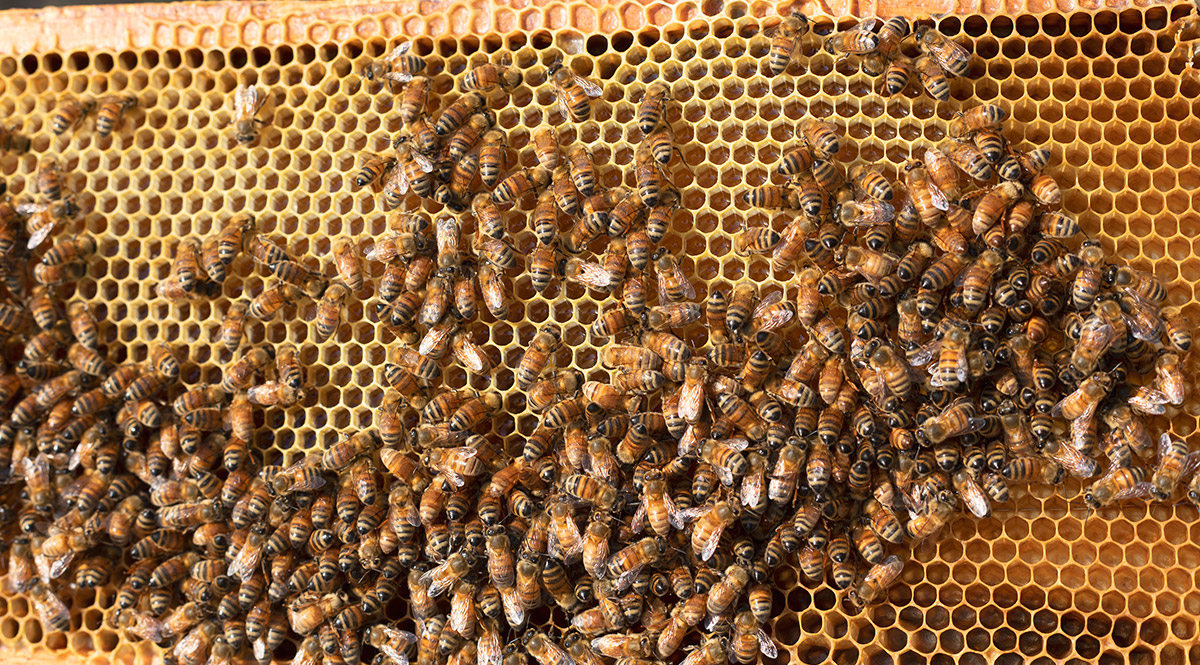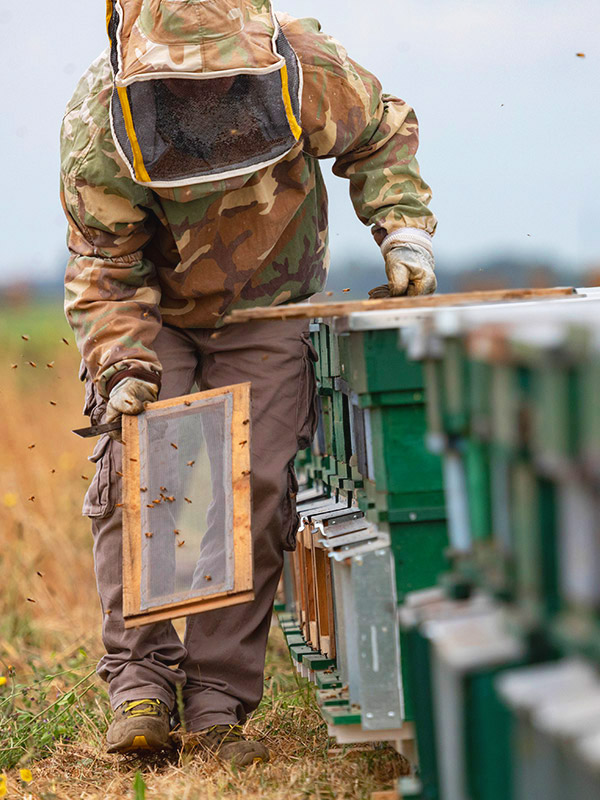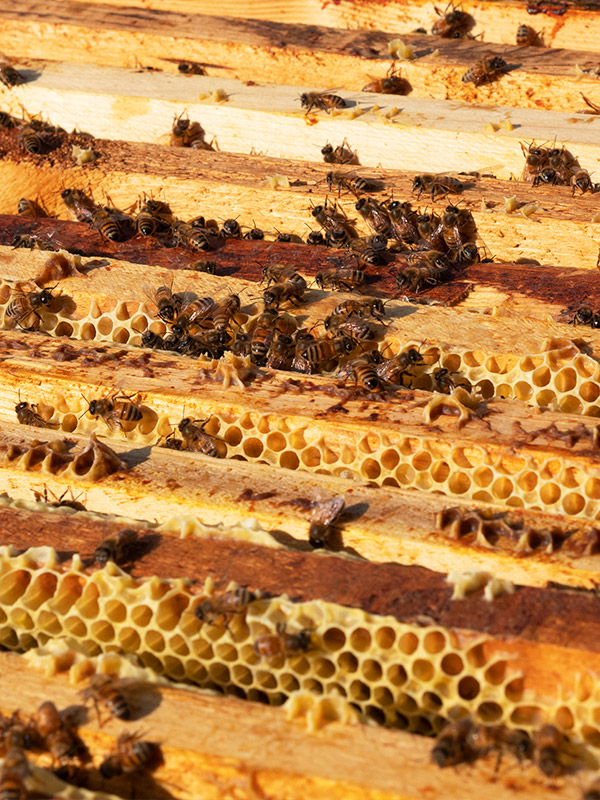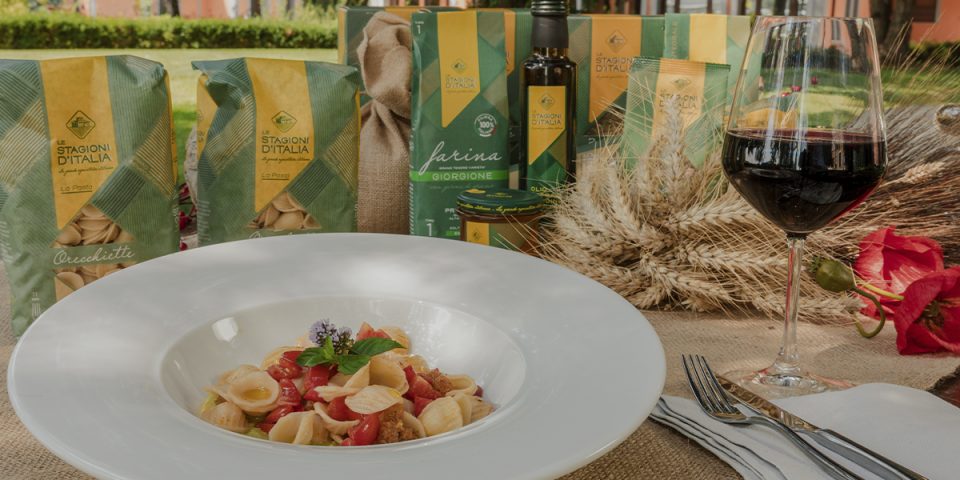Today is World Environment Day and we want to acknowledge the importance of this occasion by describing how the quality of our environment is linked to the quality of our food. To do so, we’re taking you inside an apiary where we’ll tell you all about its residents: bees. These insects rank as one of the most efficient bioindicators of environmental quality on the Planet and they are one of the main pollinators. They are essential for preserving the health of our ecosystems and the quality of our food products.
Zoom on the hive
An apiary hosts thousands of bees. The worker bees secrete waxy substances which they use to build a honeycomb composed of hexagonal cells, and this is where they collect pollen and honey and raise their brood. The bees that live in an apiary work as parts of a superorganism and, inside it, each one is basically responsible for carrying out a defined task, which it can modify if needed to meet the requirements of its community. The foraging bees are responsible for collecting the food for the colony, spanning distances of up to 7 km2 from the hive. They meticulously visit the flowers of many plant essences, above all collecting sugary substances of various origins (pollen, nectar, honeydew). While inspecting a large number of flowers of the same plant species, the bees dirty themselves with pollen, becoming excellent pollinators. Once back at the hive, the bees who had gone out to explore are able to communicate the location of the food sources to the others, by performing a characteristic dance. The observation of these behaviours has highlighted the importance of the bees' social structure.
More flowers
To guarantee the survival and permanence of the bees in a territory, they must be offered a vast choice of flowers and plant species. It is also crucial to ensure they have access to ecological corridors providing sources of nutrition throughout the year, with scalar flowering taking place in all the seasons. In this regard, agroecology and the adoption of crop rotations are certainly production techniques to be taken into consideration for our friends the bees, as they provide a diversity of environments and flowerings. The legume family, which includes plants such as alfalfa, clover and broad beans, bear flowers that are very attractive to bees,, but the same also goes for herbs, such as, for example, lavender, sage, rosemary and fennel, which are subsequently processed by man to make infusions and herbal teas.














